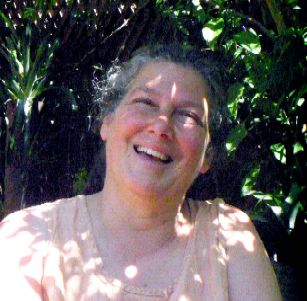| Ellen Lewis Urban Food Forest Consultant & Designer |
 |
| Ellen Lewis Urban Food Forest Consultant & Designer |
 |
|
The phrase "food forest" is getting a lot of use these days. To me a food forest is many things. A garden with woody and perennial plants providing food and other useful products: medicine, fiber, ornament. One with diverse micro-habitats for the inhabitants: ourselves and our commensals and whatever wild ones can cohabit with us—places for us to dream, places for birds to feed. A grove of trees that clear excess carbon from our air as they grow. (Yes, old established trees have been shown to sequester more carbon than small young ones.) A garden that shelters us from extremes of heat and cold and wind with large, long lived plantings that provide shade and windbreak. A garden that provides for us, giving us the freshest food and minimizing fuel use in our foodstream. A streetscape that promotes conviviality by being the shared beauty and wealth of the neighborhood. A garden that gets easier to tend the more established it becomes. I envision the entire urban landscape as a food forest. If we humans can reforest an area of land the size of the Indian subcontinent, we can sequester enough carbon to reverse global warming. That's one of my goals. If we grow food in our neighborhoods we increase food security and improve nutrition. Those are two others. This doesn't happen fast—at least the way my garden grows it doesn't. Maybe you have a blank yard that can simply be planted the way you want it, but I have established plants to work with and design around. So getting started can be a slow and deliberate process. All in good time it picks up speed. The tree that didn't get planted ten years ago is being planted today. That's how growth happens—not all at once, but by increments. What little bit of our habitat are you ready to establish? I would love to talk with you about your garden. You can call me at 510-653-9079 or send me a message. |